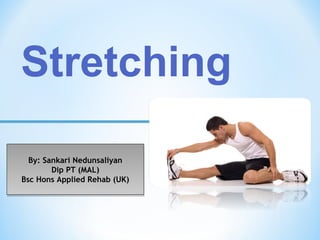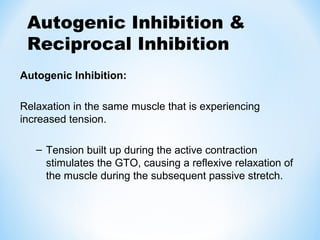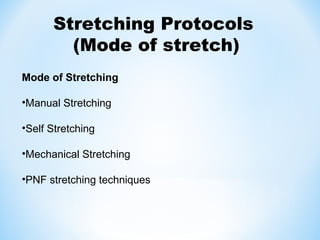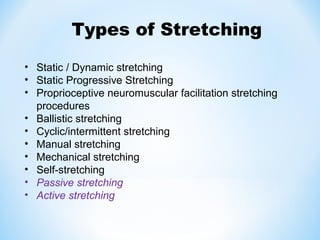Stretching is a therapeutic maneuver to increase flexibility by elongating shortened soft tissues. Several factors can contribute to hypomobility including immobilization, poor posture, and injury. Stretching protocols should involve proper alignment, stabilization, low intensity stretches held for 20-30 seconds repeated 3-5 times per week. Common stretching types include static, PNF, and ballistic stretching. Stretching is contraindicated for acute injuries, infections, or joint instability.














































